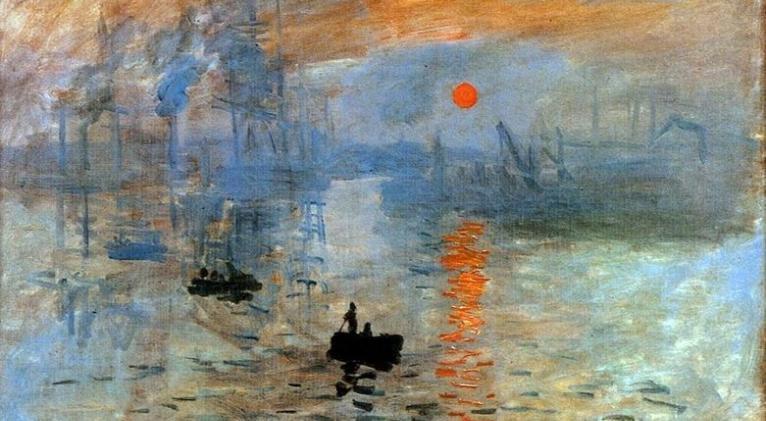ART: Summer is not only about the beach
especiales

“Impression, Sunrise” (1872), by Claude Monet, is one of the most important paintings by the French painter, one of the founders of impressionism. It is one of his most reproduced and sold pieces, and there are many versions on the web, like this one.
Since we are still in the summer season, who does not like going to the beach? Many people who do not know how to swim or cannot stand the sun or the feeling of wet, sandy skin, like to contemplate the sea. It is usually an excellent option to delight the senses, to relax, and find moments of peace.
Listening to the back and forth of the sea water, smelling the saltpeter, looking for treasures on the shore, seeing some crab, fish or jellyfish, all contribute to making it a unique experience. And, in addition, it is a pure and beautiful space at the same time.
It is very present in art. Many have painted scenes in this context and have managed to capture the beauty of its immensity, devastating fury, the day of fun or the moment of calm and introspection.
The sea can be calm or turbulent, it does not matter if it has fine sand or sharp rocks, or if it is framed by a grey or bright sky. It does not matter if the water is noticeably frozen, if it recreates violent naval battles, mythological passages, or a peaceful day of vacation. It will always be a beautiful postcard that obsesses many artists.
The history of art proves it. We have references from approximately the 17th century with coastal panoramas that are true jewels due to the use of diverse styles and techniques, whether they are simple or complex works, but which transport us to a serene world —or not— and transmit emotions to us. They lead us to feel that hypnotic effect of the waves, and place us in times.
According to the bibliography, one of the first testimonies is “View of Scheveningen Sands” (≈1630) by Dutch painter Hendrick van Anthonissen (1605-1656), known for his predilection for the nautical horizon; as well as “Seascape with Ship” (1650) by his fellow countryman Willem Van De Velde “The Elder” (1611-1693), with the same interest as he was a sailor in his youth.
Other artistic representations of greater size and popularity arrived in the 19th century with the deployment of new resources, concepts and aesthetics. Frenchman Claude Monet (1840-1926) is one of the most famous creators in this sense for his series inspired by the shore of Trouville, or the cliffs of Étretat, among other seascapes.
“On the Board of Trouville” (1870) is just one of them, but his production is vast. In this painting, we can clearly see his mastery in the use of light, the very successful tones that show us an ideal sunny day. In addition, Monet captures very well the jovial atmosphere of that time along the seafront of the coast in that French city that for a long time was his motivation to create.
Let us also remember “Impression, Sunrise” (1872) by the same author. It is famous for being considered the first impressionist painting. In fact, its title gave its name to the movement, of which Monet is the founder. It is a painting of great beauty from its simplicity. It has thick and poorly defined strokes, highlighting the asymmetry and the use of contrast with that intense orange sun that is reflected in the sea in the middle of the darkness.
On the other hand, there is also “Miranda” (1875) by British John William Waterhouse (1849-1917), who offers us a look of melancholy. We see a girl with a nostalgic air and her gaze set on a sea restless by the approaching storm. This painter is known as one of the great masters of the pre-Raphaelite and symbolist neoclassical movement.
William Waterhouse stands out for having painted mythological women and literary characters. This piece characterizes a moment of the theater classic “The Tempest” by English playwright William Shakespeare.
In another style, we present “Punta Saint-Gildas” (1922) by French post-impressionist Henri Lebasque (1865-1937), considered the painter of joy and light, who suggests a peaceful afternoon by the sea in an area of pleasant surroundings.
“Walk along the seashore” (1909), by Spaniard Joaquín Sorolla (1863-1923), is a painting in the Valencian Luminism style, which aims to capture the luminous moment. Light is important, as is movement and the environment.
This is just a sample, but there are countless traces of beaches and oceans in the history of art. It is undoubtedly a charming theme for virtuosos of the brush who find inspiration in it and recreate images of all possible styles, from the most traditional to the abstract and experimental, revealing the power of the sea, so magnanimous, imposing, mysterious, seductive, of supreme splendor.
The 19th century was the golden age for this subject, especially on the European continent. We leave you a list of those who we consider the most prestigious painters, in case you are interested in investigating the world of nature art:
Paul Gauguin
Sir Ernest Albert Waterlow
Alexander Mark Rossi
Victor Gabriel Gilbert
Bernard Johannes Blommers
Peder Mørk Mønsted
Daniel Ridgway Knigth
Sébastien Charles Giraud
Harald Slott-Møller
Translated by Sergio A. Paneque Díaz / CubaSí Translation Staff














Add new comment